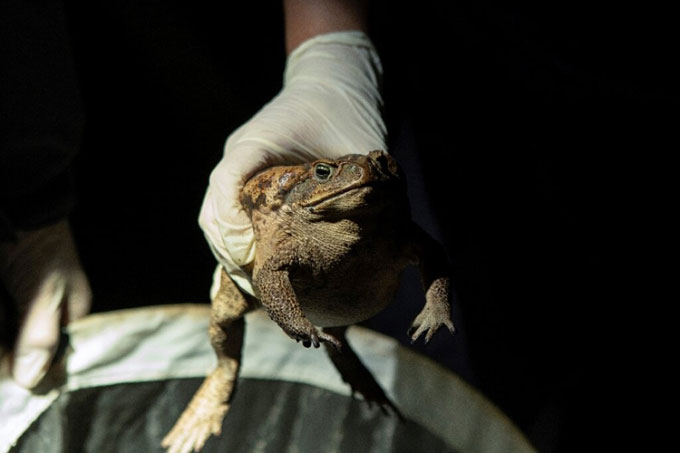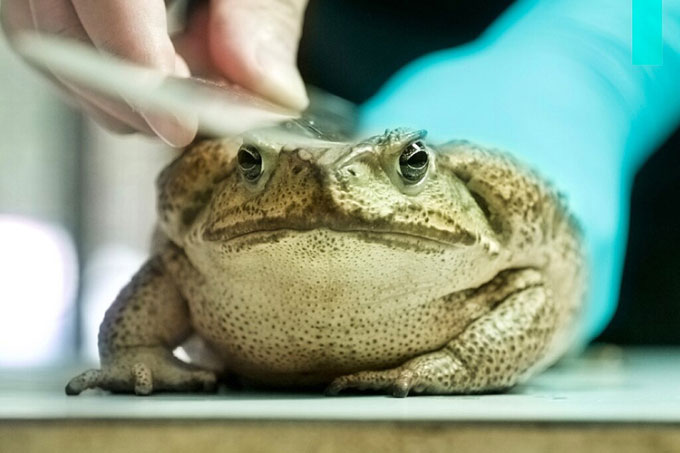An invasive species of toad from the Americas is proliferating in central Taiwan, threatening the local ecosystem.
The toad is a symbol of luck and prosperity in Taiwan, but the unexpected appearance of an invasive species is prompting officials and environmentalists to find ways to curb their spread. Armed with flashlights and protective gloves, dozens of volunteers from the Amphibian Conservation Association are working overnight in vegetable gardens and rice fields to search for the giant cane toads.

An adult cane toad spotted in Chaotun, central Taiwan. (Photo: AFP)
There is no reason for this large, highly toxic amphibian to exist in Chaotun, a town at the foot of the hills in central Taiwan. Cane toads are native to Central and South America and have never been recorded in Taiwan before, although there have been reports of their invasion and ecological destruction in Australia and the Philippines.
The situation began a few weeks ago when residents of Chaotun stumbled upon several unusually large toads in their vegetable gardens and posted photos on social media. Upon seeing the posts, conservationists immediately launched a search around the area.
“The search was conducted quickly after we confirmed the first cane toads in Chaotun. They are very large and have no natural predators in Taiwan,” emphasized amphibian scientist Lin Chun-fu.

Cane toads can grow up to 24 cm long and have no natural predators. (Photo: AFP)
Cane toads are considered a dangerous invasive species for three main reasons. They are voracious predators, breed prolifically, and contain high levels of toxins. The toxins secreted by the toads, as a defense mechanism, are particularly dangerous to dogs or pets that come into contact with them.
Volunteers from the Amphibian Conservation Association, led by expert Yang Yi-ju from National Dong Hwa University, reported that they visited the garden shown in the posted photos and were shocked to discover 27 cane toads nearby.
“I feel concerned because this is not an easy situation to address. We have informed the local residents and encouraged everyone to search, while also noting the presence of juveniles indicating that the cane toads have started breeding,” Yang told AFP.
Yang further noted that Taiwanese farmers may have seen the cane toads for a long time but did not pay attention to them. “They often overlook them because the toads help eliminate pests and are also considered a symbol of good luck. They couldn’t have imagined that this is an invasive species from a distant land,” the researcher explained.
So far, more than 200 cane toads of various sizes have been captured in Taiwan and taken to the Institute of Research for Endemic Species.
Cane toads (Rhinella marina) are listed among the “100 invasive alien species” globally, compiled by the International Species Specialist Group (ISSG). Their name comes from their preference for living in sugarcane plantations to feed. This species can grow to an average length of 10 to 15 cm, with the largest recorded specimen reaching up to 24 cm.


















































